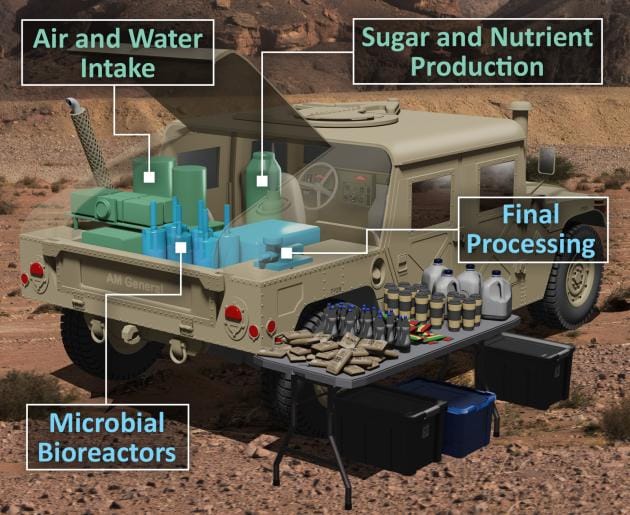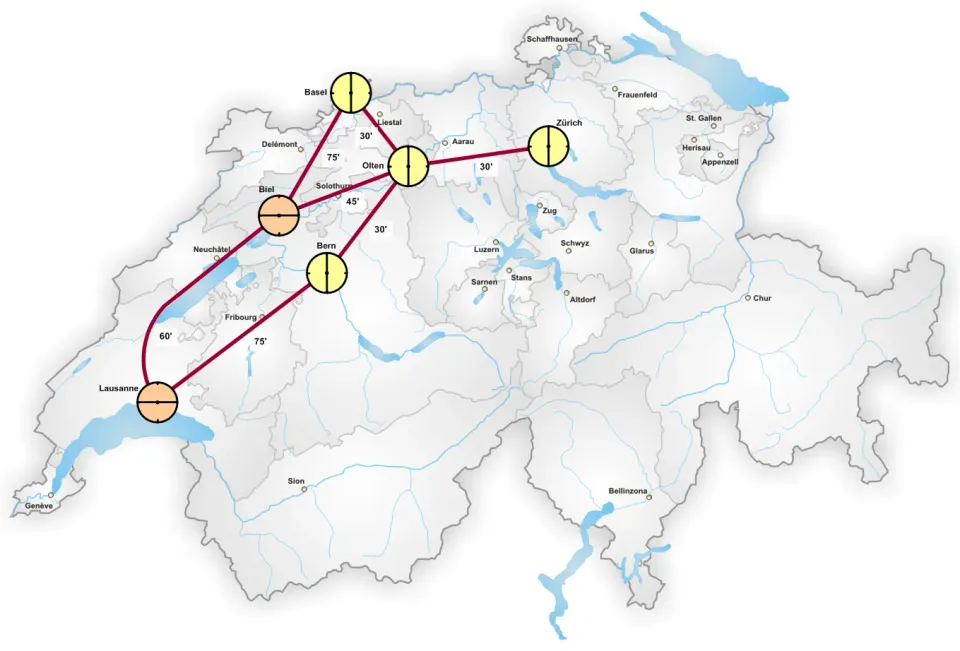Creating food from thin air

The Defense Advanced Research Projects Agency (DARPA), the research and development arm of the U.S. Department of Defense, has funded a research project by a team of scientists from Johns Hopkins University Applied Physics Laboratory and other Johns Hopkins University divisions, as well as North Carolina State University and Meridian Biotech, "to figure out how to produce nutritious, appetizing food using water, air, and electricity, with minimal to no supplementation."
At the end of the four-year, $15.4 million project, the APL-led team aims to have a compact system that can fit in the back of a military vehicle and churn out a vanilla pudding–like product with a texture similar to Greek yogurt. That food will not only be tasty, the researchers promise, but also packed with all the macronutrients, vitamins, and minerals humans need to survive.
How it works
The system the scientists are developing uses "electricity, water, and engineered microbes to pull carbon dioxide, nitrogen, and trace minerals—such as magnesium, calcium, and iron—out of the air."
Next, an electrochemical process involving common metals like tin and copper converts the CO₂ into acetate. From here, researchers can trigger a chemical reaction or introduce microbes to convert the acetate into simple sugars like glucose.
Together, the simple sugars, nitrogen molecules, and minerals form feedstock. When specially engineered microbes eat this feedstock, they can produce macronutrients—protein, carbohydrates, fat, and fiber, which are the building blocks of food—as well as vitamins. This part of the process is something many eaters are likely already familiar with: fermentation, which also gives us many foods we enjoy today, such as kimchi and yogurt.
The team is also developing microbes that can produce texturing agents and flavor molecules.
DARPA has outlined two scenarios for the technology's use: In one, the system must fit on a Humvee and be able to feed a small military combat unit deployed to a rugged environment for 45 days. In the other, it must fit inside a 20-foot shipping container and feed 100 civilians for 21 days after a natural disaster or other humanitarian crisis.
Read more:
Scientists at APL are creating food from thin air
A revolutionary project could someday help feed soldiers in rugged, hard-to-reach places



